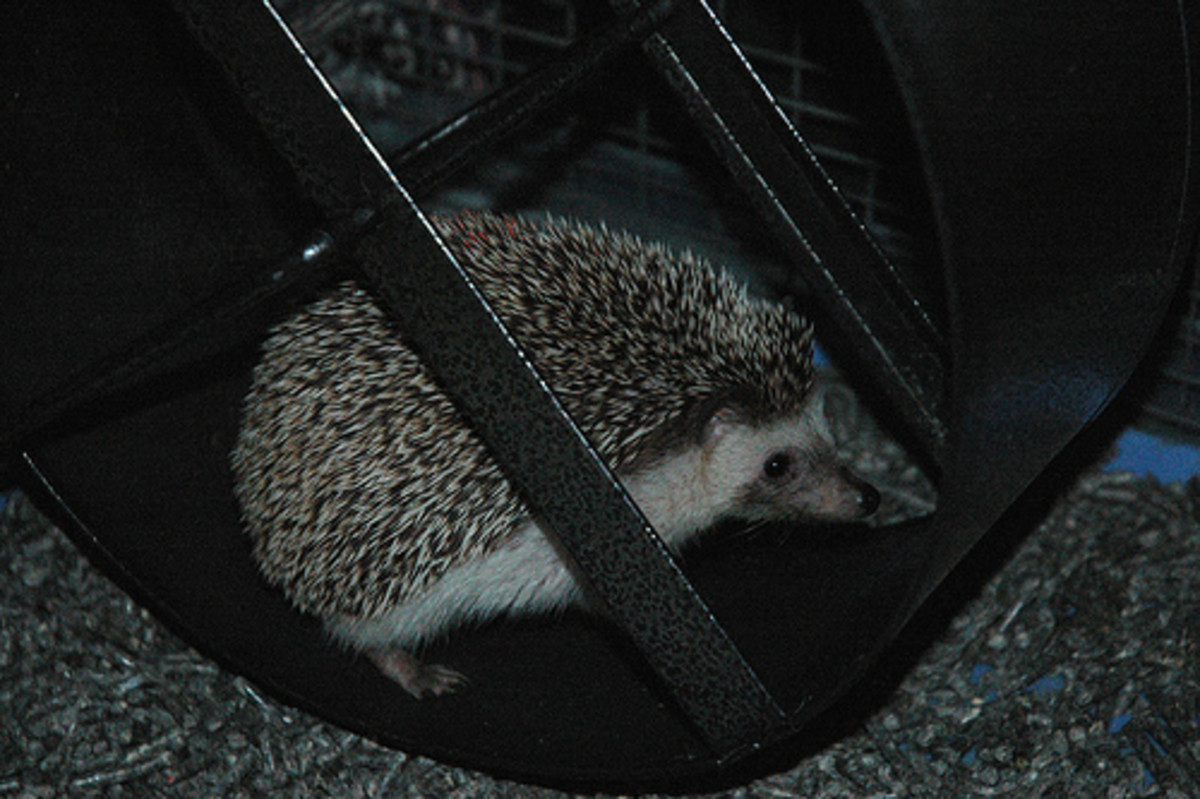
Even though hedgehogs are usually considered low-maintenance pets, there are still specific guidelines that must be followed to ensure that they are well-kept. Some guidelines, such as handling techniques, might be more for the sake of the owner than the hedgehog. Other areas of care besides handling are housing, accessories, food and healthcare.
How to Handle a Pet Hedgehog
When handling a hedgehog, be aware of the quills. An article on HedgeHogsasPets.com called "Handling Your Pet Hedgehog" pointed out that even though the quills on a hedgehog are much safer than those of a porcupine and feel soft when flattened, they can still hurt when they poke someone. The article recommended that the owner not change his or her smell between handling, since hedgehogs don't see very well and rely on their sense of smell to identify people. A hedgehog could feel uncomfortable being handled by someone it doesn't recognize and may have a negative reaction.
In an article at HedgeHogWorld.com called "Handling Your Hedgehog", Becca Loane gave the following advice for picking up a hedgehog: "The best way to pick up a hedgehog is by holding your hands flat on each side of the hedgehog with your palms up, then gently moving your hands together to fully support the hedgehog's feet and belly." Loane continued to say that this method makes the hedgehog feel more secure and can work even when the hedgehog becomes nervous and rolls into a spiky ball. Also, the article mentioned that an owner can use a small blanket to help with quills while handling a nervous hedgehog.
After picking up the hedgehog, both articles recommended letting a new hedgehog relax with the owner. The hedgehog should be able to just sit beside or in the lap of the owner until it gets to know him or her. Then, according to the article at hedgehogsaspets.com, the hedge hog may begin to desire extra attention such as petting or scratching between its quills.
Loane said in her article that some hedgehogs may naturally be more active and want to explore the area. In this case, Loane recommends allowing a hedgehog to "use their owner as a human jungle gym" in a room that has been hedgehog proofed.
How to Provide Housing for a Pet Hedgehog
Hedgehogs require cages that aren't open-topped, unless the sides are high and slick, according to the International Hedgehog Association (IHA). The website explained that this is because hedgehogs can be very good climbers. It recommended a 20 gallon aquarium for owners who wish to house their hedgehogs in an open-topped cage. Also, the website said to make sure cages are put in a "warm, well lit area that is free of drafts and direct sunlight."
A hedgehog cage must also have a solid bottom, according to an article at hedgehogworld.com by Antigone Means called "What Kind of Cage to Use." Means explained that this is because hedgehogs don't walk well on wire floors and can get their feet or legs caught or injured by trying to do so. Wire cages work as long the bottoms are solid.
The article also said that cages should be no smaller than two square feet of space and that this is the bare minimum. Since hedgehogs like to move around, more space is better. When looking to purchase a cage, check for ventilation, ability to let in light, security and ease of cleaning, according to the article.
Appropriate handling and housing can make the life of a hedgehog and its owner more comfortable. Picking up and spending time with a contented hedgehog can save the owner from some painful pokes, and adequate housing can prevent hedgehog escapes and injuries.




